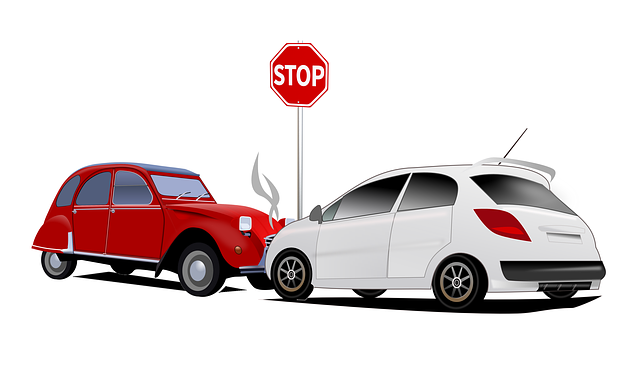Car insurance is a financial safety net for individuals and their vehicles, with various coverage options addressing different risks. Understanding aspects like liability, collision, comprehensive, and personal injury protection (PIP) is key. Policies vary in deductibles, limits, and perks, so comparing these factors is essential for affordable rates. Demographic, driving, and vehicle factors influence premiums; responsible driving and financial habits can lower costs. Bundling, standalone policies, and annual reviews offer savings opportunities. Proactive safety measures, comparisons, and leveraging discounts maintain low car insurance rates.
Car insurance is a necessity, not a luxury. Understanding the basics of coverage types and policies can empower you to navigate the complex landscape of car insurance rates. In this comprehensive guide, we’ll delve into the factors influencing premiums, offer strategies for getting affordable quotes, explore the impact of credit scores, and provide insights for young drivers. Learn about bundling vs. standalone policies and discover when to switch plans. Additionally, we’ll share top tips to maintain low car insurance rates over time, ensuring you stay protected without breaking the bank.
Understanding Car Insurance Basics: Coverage Types and Policies

Car insurance is a safety net that protects individuals and their vehicles from financial loss in case of accidents or other unforeseen events. It’s essential to understand the basics of car insurance before shopping for the best rates. Coverage types include liability, collision, comprehensive, and personal injury protection (PIP), each catering to different risks and needs.
Policies vary in terms of deductibles, coverage limits, and additional perks like roadside assistance or rental car benefits. Understanding these components is crucial when comparing affordable car insurance rates. By evaluating your specific requirements and risk profile, you can tailor your policy to ensure adequate protection without overspending.
Factors Influencing Car Insurance Rates: A Comprehensive Look

Car insurance rates are determined by a complex interplay of various factors, each playing a crucial role in the pricing structure. When it comes to affordable car insurance rates, understanding these influences is essential for consumers seeking the best coverage at a reasonable cost. Demographic data, such as age and gender, has long been a key factor; traditionally, younger drivers are considered higher risks due to inexperience, leading to higher premiums. However, with advancements in driver safety courses and responsible driving initiatives, this gap is gradually narrowing.
Beyond demographics, driving history and vehicle characteristics also significantly impact car insurance rates. Drivers with clean records and no previous claims typically enjoy lower premiums compared to those with a history of accidents or moving violations. Similarly, the make and model of a vehicle, its safety features, and age all contribute to the cost. Newer cars equipped with advanced safety systems often come with reduced rates due to their enhanced collision avoidance capabilities. Conversely, older vehicles, especially those lacking modern security measures, might face higher premiums.
Strategies to Get Affordable Quotes: Tips for Savings

The Role of Credit Score in Insurance Pricing

Credit score plays a significant role in determining car insurance rates, as it’s a key factor used by insurers to assess risk. A higher credit score generally indicates a lower risk profile, meaning the insurer is more confident that you’ll pay your premiums on time and claim less damage. This often translates to lower monthly payments for car insurance. Conversely, a lower credit score suggests a higher risk, potentially leading to increased rates.
This is because insurers consider responsible financial behavior as a positive indicator. Maintaining a good credit score demonstrates reliability and predictability in managing financial obligations. As such, those with excellent credit history are often rewarded with competitive car insurance rates. On the other hand, those with poor credit scores may face challenges in securing affordable coverage or might be required to pay higher deductibles or premiums to offset perceived increased risks.
Young Drivers and Insurance: Navigating the Challenges

Young drivers often face higher car insurance rates due to their lack of driving experience and statistical higher risk of accidents. This can make finding affordable car insurance a significant challenge for this demographic. Insurance companies consider various factors, such as age, driving record, and location, to determine premium amounts. As a result, young drivers may need to explore different options to find the best rates.
Navigating these challenges requires strategic planning. Young drivers should compare quotes from multiple insurers, maintain a clean driving record, and opt for safe driving courses or defensive driving programs to reduce premiums. Additionally, insuring a lesser vehicle value or opting for liability-only coverage can help lower insurance costs. Remember, responsible driving habits and smart financial decisions can lead to more affordable car insurance rates over time.
Bundling vs. Standalone Policies: Which is More Cost-Effective?

When considering car insurance, one key factor that can significantly impact your costs is choosing between bundling and standalone policies. Bundling refers to combining your auto insurance with other types of coverage, such as home or life insurance, offered by the same provider. This approach often comes with discounts, as insurers aim to attract customers who need multiple services. For instance, many companies offer reduced rates when you insure both your car and home together.
On the other hand, standalone policies are purchased separately from other types of coverage. While this might mean missing out on bundled discounts, it provides flexibility and allows you to shop around for the best deals on car insurance alone. Standalone policies can be particularly cost-effective if you already have comprehensive coverage or if your driving history makes you eligible for lower rates from multiple carriers. Thus, evaluating your needs and comparing offers from both bundling and standalone providers is crucial in securing affordable car insurance rates.
Reviewing and Switching Insurance Plans: When and How

Many drivers overlook the potential savings from reviewing and switching their car insurance plans, often sticking with their initial provider out of convenience or fear of changing policies. However, car insurance rates can vary significantly among different companies, and regularly comparing your options could lead to substantial financial gains. It’s wise to reassess your coverage needs and market offerings at least once a year.
When deciding to switch, examine your current policy’s renewal notice, which provides details about your upcoming coverage terms and rates. Use this as a starting point for shopping around. Visit reputable insurance comparison websites or contact several local providers to request quotes based on your updated profile, including any changes in driving history, vehicle specifications, and coverage preferences. Carefully review the offers received, focusing not just on price but also on the scope of coverage provided, deductibles, and customer service reputation. Opting for a new plan that better aligns with your needs could result in substantial savings without compromising the quality of your car insurance.
Top Ways to Keep Your Car Insurance Rates Low Over Time

Keeping your car insurance rates low over time involves a combination of smart choices and responsible driving habits. One effective strategy is to maintain a clean driving record by avoiding traffic violations and accidents. Insurers often view safe driving as a sign of reliability, which can lead to lower premiums. Regular vehicle maintenance is another key factor; keeping your car in good condition ensures it’s less prone to breakdowns and other costly issues.
Additionally, comparing quotes from different insurance providers regularly can help you find the best rates available. Many companies offer discounts for various reasons, such as bundling policies, maintaining a good credit score, or signing up for safe driver programs. Utilizing these savings opportunities can significantly reduce your car insurance costs over an extended period.
